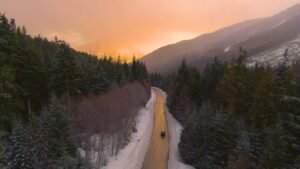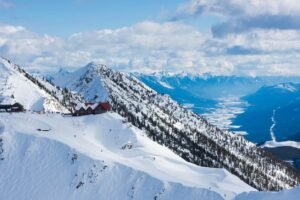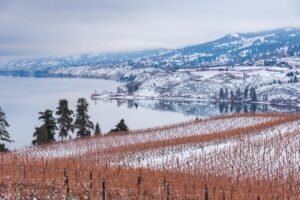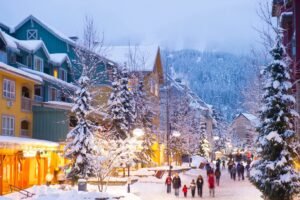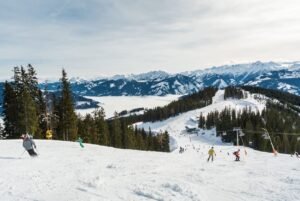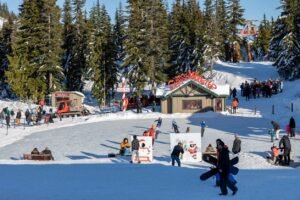The Broken Group Islands BC, a kayaker’s paradise hidden in Pacific Rim National Park Reserve, beckons with solitude and wilderness. This guide is your ticket to navigating the serene waters, spotting diverse wildlife, and embracing the cultural heritage of the First Nations. Embark on a journey of preparation and discovery, and unlock the secrets of these remote islands infused with history and natural beauty. Various kayaking routes are available in the Broken Group Islands, offering different levels of adventure and exploration.
Key Takeaways
-
The Broken Group Islands, part of the Pacific Rim National Park Reserve, offer over 100 unique islands to explore by kayak, with diverse flora, fauna, and cultural history.
-
Prepare for your adventure with camping permits, National Park entry passes, and by packing essentials like biodegradable soap, a sturdy tent, cooking gear, and navigation tools.
-
Practice sustainable tourism through Leave No Trace principles, respect wildlife by maintaining distance, and honor cultural sites and traditions of the local First Nations.
-
Observe diverse marine life while kayaking in the Broken Group Islands.
Discovering the Broken Group Islands in BC
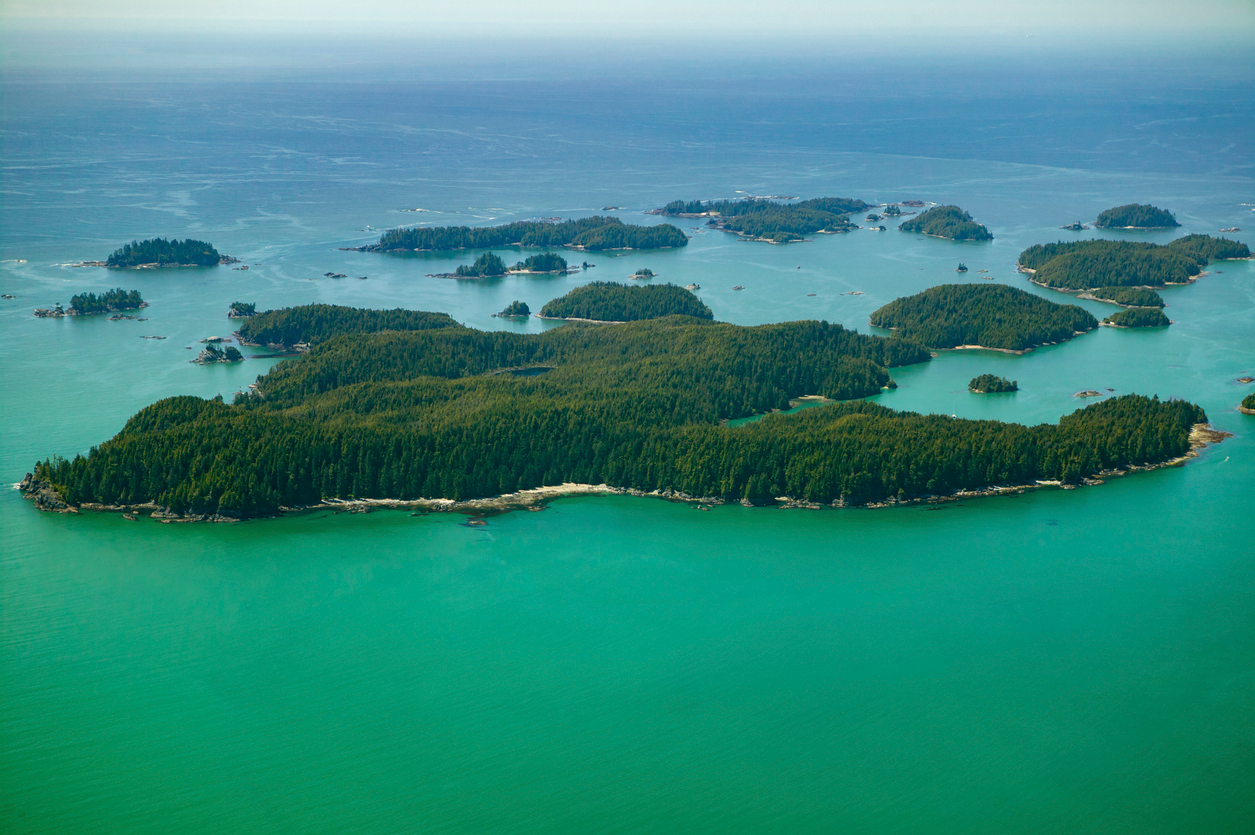
In the cool embrace of the North Pacific, off the western coast of Vancouver Island, lies an archipelago of over 100 islands and islets known as the Broken Group Islands. This archipelago, also referred to as the broken islands group, is a treasure within the Pacific Rim National Park Reserve, boasting a diverse array of landforms across 10,607 hectares of maritime splendor. Yet, despite its vastness, the actual landmass is a mere 1,350 hectares, emphasizing the dominion of the surrounding marine environment.
Each island has its own character, from windswept outcrops to lush, forested retreats, offering an expedition rich with discovery.
Journey to the Heart of Barkley Sound
Your adventure begins with:
-
a scenic 90-minute ferry ride from Horseshoe Bay to Nanaimo, where the majesty of Vancouver Island first greets you
-
the option to board the MV Lady Rose in Port Alberni for a historic voyage to Barkley Sound
-
the option to drive to launch points like Secret Beach Campground and Kayak Launch for a more hands-on approach.
Another potential launch point for kayakers is Toquaht Bay.
The latter, a mere 45 minutes from Ucluelet, is an exemplary starting line for your kayak expedition. Should you be without your vessel, worry not – Port Alberni offers kayak rentals to ensure no traveler is left shore-bound.
Embracing the True West Coast Experience
As you paddle out from the shelter of Secret Beach, you are enveloped by the wild, untamed beauty quintessential to the west coast experience. The Broken Group Islands, strung between Ucluelet and Bamfield, serve as gateways to both rugged coastlines and crystal clear waters that beckon exploration. Nearby, Gilbert Island offers kayakers a seamless connection to neighboring islands, making for a truly interconnected aquatic adventure. Hand Island is another notable destination for kayakers seeking to explore the interconnected islands.
It is these sheltered waters of the Pacific Ocean that draw paddlers and boaters alike, each seeking their own slice of the serene bounty.
The Cultural Tapestry of the Broken Group Islands
But to truly understand this archipelago, one must delve into its cultural tapestry. The Broken Group Islands are steeped in the history of the Tseshaht and Hupacasath First Nations, the Toquaht Nation, and the Uchucklesaht Tribe, whose presence dates back thousands of years. Benson Island, in particular, is a cultural cornerstone, revered as the birthplace of humanity in Tseshaht lore and marked by a wooden statue that stands as a testament to its sacred significance. Dicebox Island is another culturally significant site that visitors should respect and preserve. Visitors can enrich their knowledge through natural and historical tours, learning the stories of the land from the Tseshaht Nation’s Volunteer Beach Keepers, who offer insights into both safety and tradition.
Preparing for Your Broken Group Islands Adventure
Before you can lose yourself in the splendor of the Broken Group Islands, there’s essential preparation to be done. Here are some steps to follow:
-
Obtain a National Park entry pass for park admission.
-
Reservations for camping permits can be made through the Parks Canada Reservation System.
-
Remember, this is wilderness camping at its core, offering only the barest of amenities and demanding thoughtful planning due to the remote nature of the campgrounds.
It’s a venture that beckons the prepared, so let’s ensure you have everything in order for an untroubled journey through this maritime wonderland.
Securing Permits and Understanding Camping Regulations
To immerse yourself in the natural beauty of the islands overnight, you’ll need a Backcountry Camping Permit and a National Park Entry Pass. Adhere to the camping regulations that limit your stay to 14 days and restrict group sizes to a maximum of 12 individuals, ensuring everyone can enjoy the tranquility of these isles. Reservations are not a suggestion but a mandate, accessible online or by phone through the Parks Canada Reservation System.
Once at your designated camping area, you’ll find basic facilities such as solar composting outhouses, a small comfort in the vast expanse of the wilderness.
Packing Essentials for Island Exploration
Your pack should be a carefully curated collection of essentials. Here are some items to consider:
-
Biodegradable soap to minimize environmental impact and reduce your footprint
-
A robust tent and sleeping bag for a comfortable night’s sleep under the stars
-
A reliable cooking setup for preparing hearty meals after a day of paddling
These islands don’t offer the convenience of a corner store, so every item in your kayak must be chosen with purpose and necessity in mind.
Navigating the Weather and Waters
As you chart your course through the islands, weather forecasts become your guiding star, shaping your journey and ensuring safe passage. Equipment like a marine VHF radio for updates and navigation tools such as a compass or GPS are invaluable allies in these unpredictable waters. Be prepared for the full spectrum of the west coast’s mercurial temperament, from gentle breezes to challenging winds and enveloping fog.
With a myriad of reefs, islets, and channels, each stroke of your paddle during your kayak trip is an exercise in careful navigation, especially as winds and currents can conspire to test even less experienced sea kayakers.
Experiencing the Wildlife and Natural Features of the Broken Group Islands
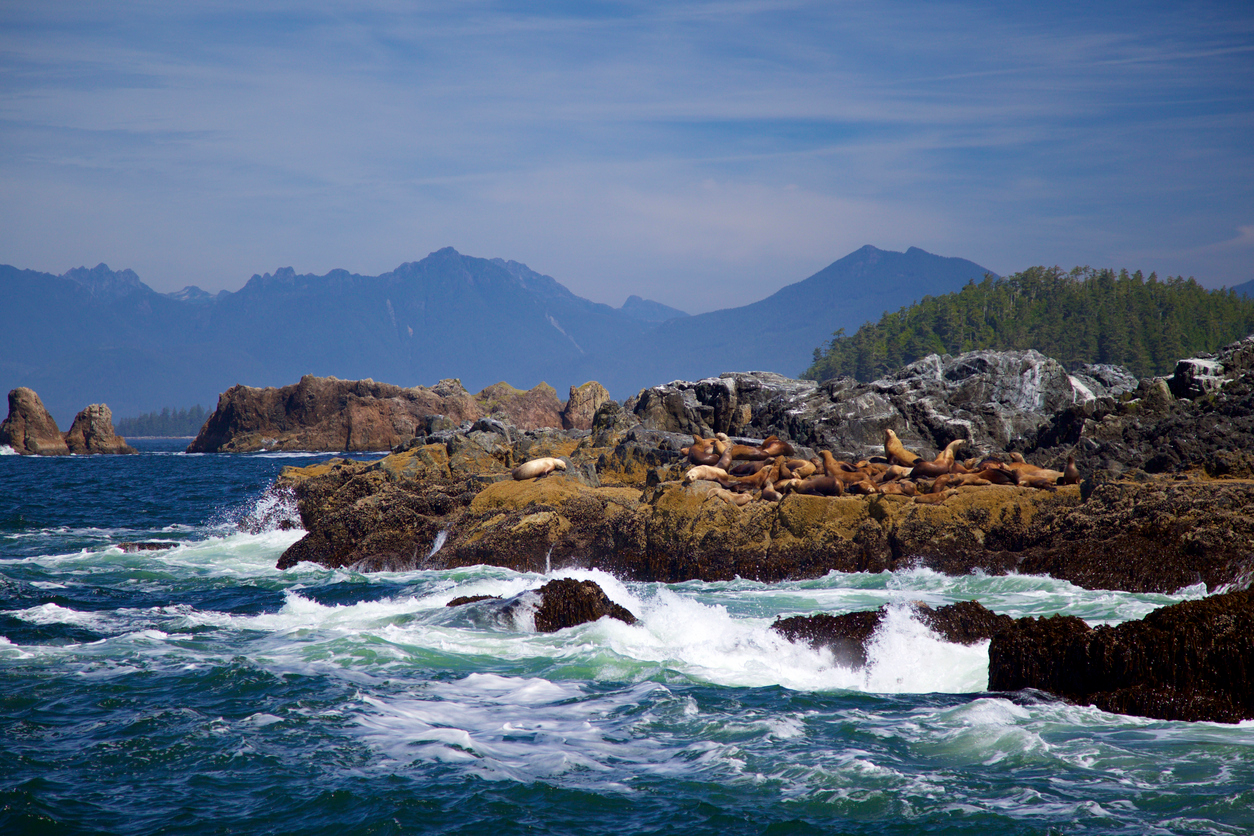
The Broken Group Islands are not just a paddler’s paradise; they are a living tableau of the natural world. Here, wildlife thrives in abundance, including:
-
Playful antics of sea otters and sea lions
-
Majestic soar of bald eagles
-
Grey whales breaching the ocean’s surface
-
Seals basking on rocky outcrops
-
Occasional orca pods cutting through the waves
-
Rare presence of cougars, wolves, and bears
These animals add an extra thrill to the sense of wilderness that envelops you here.
Encounters with Marine Life
The waters surrounding the Broken Group Islands teem with marine life, including sea otters, a submerged mosaic of colors and shapes that beckon the curious. Don your scuba gear and descend into this liquid realm, where anemones dance, fish dart, crabs scuttle, and sea stars cling to the ocean floor. The truly fortunate may encounter a parade of sea otters, the occasional orca or gray whale, or even the elusive sea lion colony.
It’s a diver’s dream, a chance to become one with the Pacific Ocean’s hidden wonders.
Exploring Rocky Outcrops and Secluded Anchorages
Amidst the islands, rocky outcrops like those on Gibraltar Island serve as natural harbors for those who sail the sea. Here, on Gibraltar Island, anchorages nestle within the embrace of redwood trees, offering serene vistas and a moment of respite. It’s a place where you can string a hammock and let the rhythm of the waves lull you into tranquility.
While exploring, remember to don layers suitable for the capricious weather and protective gear to fend off the occasional spray of saltwater during your paddling journey.
The Flora and Dangerous Trees of the Islands
Amid the lush flora of the Broken Group Islands, danger sometimes lurks in the form of precarious trees. Before you pitch your tent, conduct a thorough inspection of the surrounding area, looking skyward for dangerous trees and branches that threaten to disturb your slumber.
It’s a simple precaution, but one that ensures your adventure remains a tale of wonder rather than woe.
Island-Hopping Itinerary Ideas for the Broken Group Islands
Crafting the perfect island-hopping itinerary is an art form, balancing adventure with the peaceful embrace of nature. The typical expedition spans five to seven days, allowing ample time to soak in the nearly 100 islands that make up this enchanting archipelago. From the calm waters cradled by sheltered islands to the more daring stretches of open ocean, kayakers will find their rhythm with the tides.
For a taste of this adventure, consider a four-day journey that strings together Hand, Clarke, and Gilbert islands – each step requiring a separate camping permit and a readiness for discovery. Hand Island is a recommended stop on an island-hopping itinerary, offering unique landscapes and serene spots for relaxation.
A Day at Clarke Island
Clarke Island whispers of history and invites restful nights. Here, kayakers find sandy beaches and grassy knolls, protected by the towering conifers that stand guard against the elements. Once the site of a bustling hotel, now only fragments remain, adding a touch of mystery to the island’s tranquil setting.
With quality outhouses and designated camping spots, Clarke Island marries convenience with the call of the wild. Spend your day paddling through history and nature, then return to the comforts of a well-appointed campsite.
Gilbert Island: A Kayaker’s Haven
Gilbert Island beckons with calm, sheltered waters that embrace kayakers of all experience levels. Here, you can:
-
Rent a kayak from the available kayak rentals and glide across the glassy surface
-
Take in the lush scenery and vibrant marine life that flourishes around the island
-
Enjoy the pristine and unspoiled natural beauty, a painting of greens and blues that stretches as far as the eye can see.
With accessible rental options and an environment that nurtures both adventure and tranquility, Gilbert Island is a paddler’s sanctum.
Benson Island: A Blend of Nature and Culture
Benson Island stands as a cultural beacon, a place where the Tseshaht First Nation’s history is etched into every stone and woven into the forest canopy. It is a place of stories, where nature and culture merge into a narrative that spans millennia.
As you step onto its shores, you are walking in the footsteps of the ancients, becoming part of the island’s living history.
Sustainable Practices While Visiting the Broken Group Islands
As you traverse the Broken Group Islands, sustainability should be the compass that guides every action. The islands’ splendor is a delicate balance, one that tour operators honor by using energy-efficient boats and engaging visitors in local ecology education. Tourism here is not just about witnessing beauty; it’s about nurturing it, leaving a legacy of conservation and respect.
Eco-tourism activities play a crucial role in preserving the natural beauty of the Broken Group Islands. Engage in eco-tourism activities that contribute to this living ecosystem, such as:
-
Beach clean-ups
-
Wildlife research
-
Supporting local enterprises that collaborate with environmentalists and indigenous communities to offer enriching experiences.
Leave No Trace Principles
The Leave No Trace principles are crucial for preserving the islands’ delicate ecosystems. When wandering the trails, stay on established paths to protect the undergrowth and avoid trampling the fragile ecosystems. In areas where trails are not defined, distribute your activities to prevent the formation of unintended paths or campsites.
Choose to camp on durable surfaces like rock or dry grasses, and keep your campsites small, blending into the existing clearings without adding to the footprint on the land.
Coexisting with Wildlife
The islands are a sanctuary, not only for us but for the wildlife that inhabits them. Maintain a respectful distance from marine life, including seal colonies, observing without interfering. Your presence should be a silent footprint, leaving no trace on the habitats and routines of the creatures around you. Seal colonies, in particular, require a gentle approach, so avoid landing on their rocky homes to prevent causing distress.
Keep noise to a minimum, as the echoes of human activity can ripple far into the natural world, unsettling its inhabitants. Stick to established trails, feed your curiosity but not the animals, and ensure that all waste is disposed of responsibly.
Respecting Cultural Sites and Traditions
The Broken Group Islands, also known as the Broken Islands, are not just marvels of nature but also sanctuaries of living history. Places like Dicebox Island are off-limits for camping to preserve their historical significance, a stark reminder of the importance of respecting access restrictions. Longhouses once stood here, a testament to the deep roots of First Nations peoples in these lands.
As you explore, do so with a reverence for the heritage and customs that are as much a part of these islands as the sea and the sky. Respecting these sites ensures the conservation of the Broken Group Islands’ rich cultural legacy for generations to come.
Summary
As our journey through the Broken Group Islands draws to a close, we reflect on the myriad experiences that await the intrepid explorer. From the initial ferry ride to the final paddle stroke, these islands offer a symphony of natural beauty, cultural richness, and adventure. We’ve covered the practicalities of preparation, the joy of discovery, the thrill of wildlife encounters, and the importance of sustainable tourism. The Broken Group Islands beckon with their rugged coasts, whispering forests, and the timeless dance of ocean and land.
Proper preparation and respect for nature are crucial for a safe and enjoyable kayak trip in these pristine waters.
May your visit be filled with the wonder these isles generously offer, and may you carry with you the responsibility to preserve this paradise for those who will follow in your wake. Let the call of the wild guide you, and the spirit of the islands remain with you long after you’ve returned to shore.
Frequently Asked Questions
How do I get to the Broken Group Islands?
To get to the Broken Group Islands, start by taking a ferry from Horseshoe Bay to Nanaimo, then drive or take a boat from Port Alberni to reach launch points like Secret Beach Campground for a kayaking adventure. Enjoy your trip!
Do I need a permit to camp on the Broken Group Islands?
Yes, you need a Backcountry Camping Permit and a National Park Entry Pass before your trip to the Broken Group Islands. Be sure to follow the camping regulations for group size limits and stay durations.
What kind of wildlife might I see in the Broken Group Islands?
You can expect to see grey whales, humpback whales, orcas, seals, sea lions, otters, bald eagles, and various shorebirds in the Broken Group Islands. Less commonly, you may also spot cougars, wolves, and bears. Enjoy the wildlife!
Can I rent a kayak on the Broken Group Islands?
Yes, you can rent a kayak on the Broken Group Islands, especially on Gilbert Island, if you don’t have your own equipment. Happy paddling!
How can I practice sustainable tourism during my visit?
To practice sustainable tourism during your visit, remember to adhere to Leave No Trace principles, maintain a safe distance from wildlife, properly dispose of waste, and respect cultural sites and traditions. Avoid feeding animals as well.

